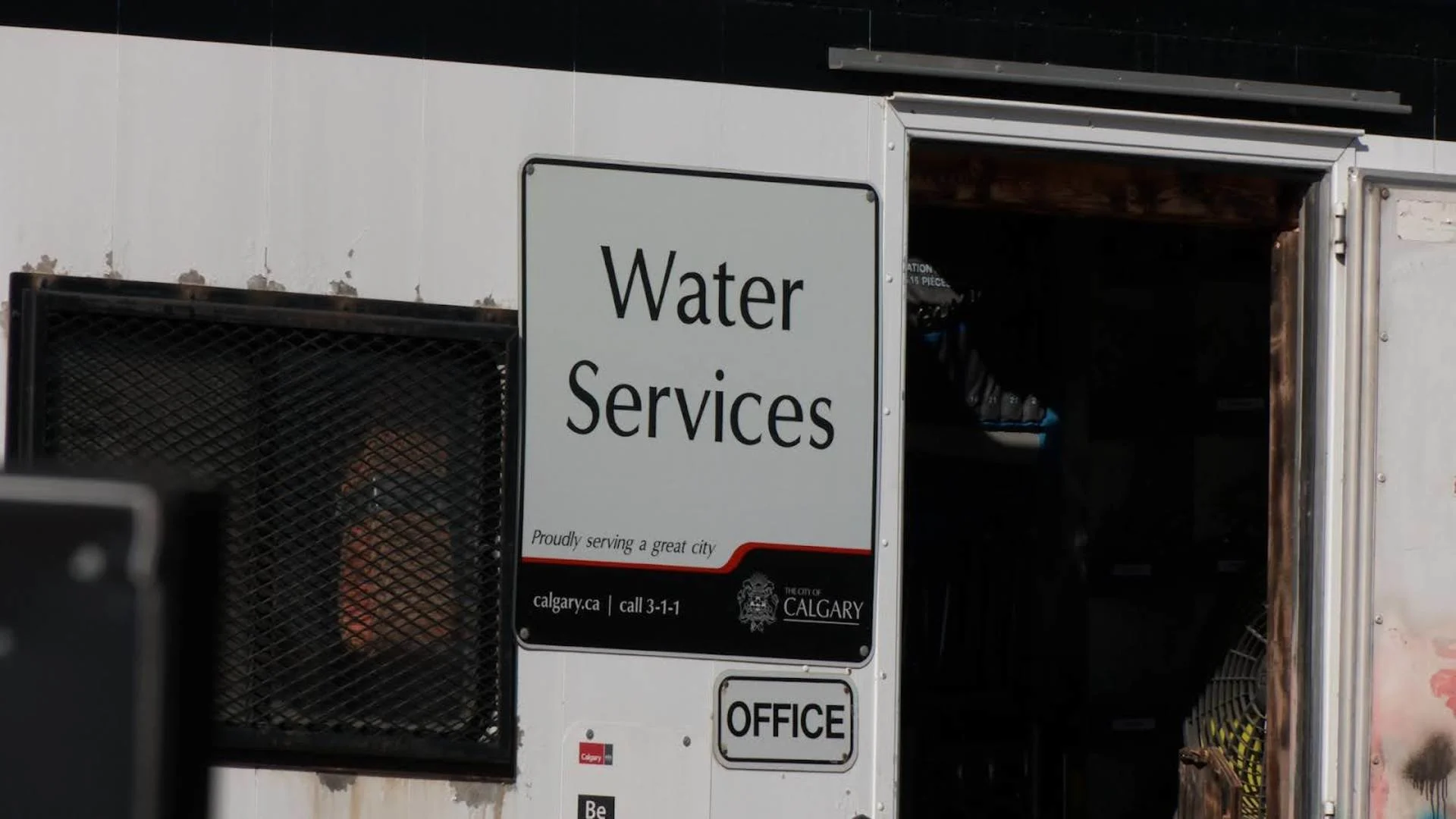
Calgary at risk of 'running out' if current water usage is not reduced
Two days after a water main break in northwestern Calgary, the city is still at risk of running out of water.
Although Calgarians reduced their water use in the hours following Thursday morning's emergency water supply alert, the effort didn't last, city officials say.
"Unfortunately, as the evening went on, water use increased. It took us back to a situation where we were using more water than we can produce," said City of Calgary Emergency Management Chief, Susan Henry. "If we do not rescue our water use, we are at risk of running out."
On Wednesday evening, what the city has described as a "catastrophic" break, occurred along a critical water feeder line extending from its Bearspaw water treatment plant. A large volume of water could be seen gushing out from the break on 16th Avenue N.W. just west of Home Road, as water services crews rushed to seal off the break.

A map shows the distance between Bearspaw water treatment plant and where the water main break occured on 16th Avenue N.W. on June 5.
SEE ALSO: Lightning-caused wildfires burn the most area in Canada, and that may increase
By Thursday morning, the break had been isolated and most water flow had been halted, but due to the large volume of water left around the underground pipe, city crews could not assess the repair.
SEE ALSO: Water main break in northwest Calgary leaves supply in critical state
As of Friday morning, that remained the case, officials said in a media update. There is still no timeline for repairing the pipe, and the cause of the break is unknown.
Hundreds of businesses in Calgary have been left without water, and a boil water advisory has been issued for Calgary's Bowness neighbourhood, which is the closest community to the break.
But officials explained that due to the location of the break and the water line's key distribution role in distributing water to service lines across the city, all of Calgary is at risk.
Bearspaw is one of Calgary’s two water treatment plants. The water line was built in 1975 and moves water to 1.2 million Calgarians in the city's south and east.
"We are taking stock of how much water we’re able to produce and bring out to the large reservoirs throughout the city," explained Water Services Director, Nancy Mackay. "When we look at that, and compare that to what Calgarians are using, the balance dips in the wrong direction. The demand for water was higher than what we were able to produce."
Officials did not provide any specific figures relating to water supply, or give any sense of how long it might take for supply in Calgary to dip to a point where some residents run out, but said the risk relates to the response from Calgarians.
Henry asked Calgarians to reduce their water use by 25 per cent until the emergency is resolved.
"That’s a few minutes off your shower, skipping a few flushes, holding off on your load of laundry, or holding off on your dishes," she said.

City crews continue search for source of the 'catastrophic' water main break
A "Stage 4" water restriction remains in place in Calgary, meaning the public has been ordered to cease all outdoor watering activities including watering lawns and gardens and washing vehicles.
The city has also closed a number of its recreational facilities, including pools and arenas.
Henry added that on Thursday, bylaw officers responded to 56 reports of misuse of water.
A citywide fire ban remains in effect as well, Henry said. City officials have responded to eight calls related to fire ban violations.
